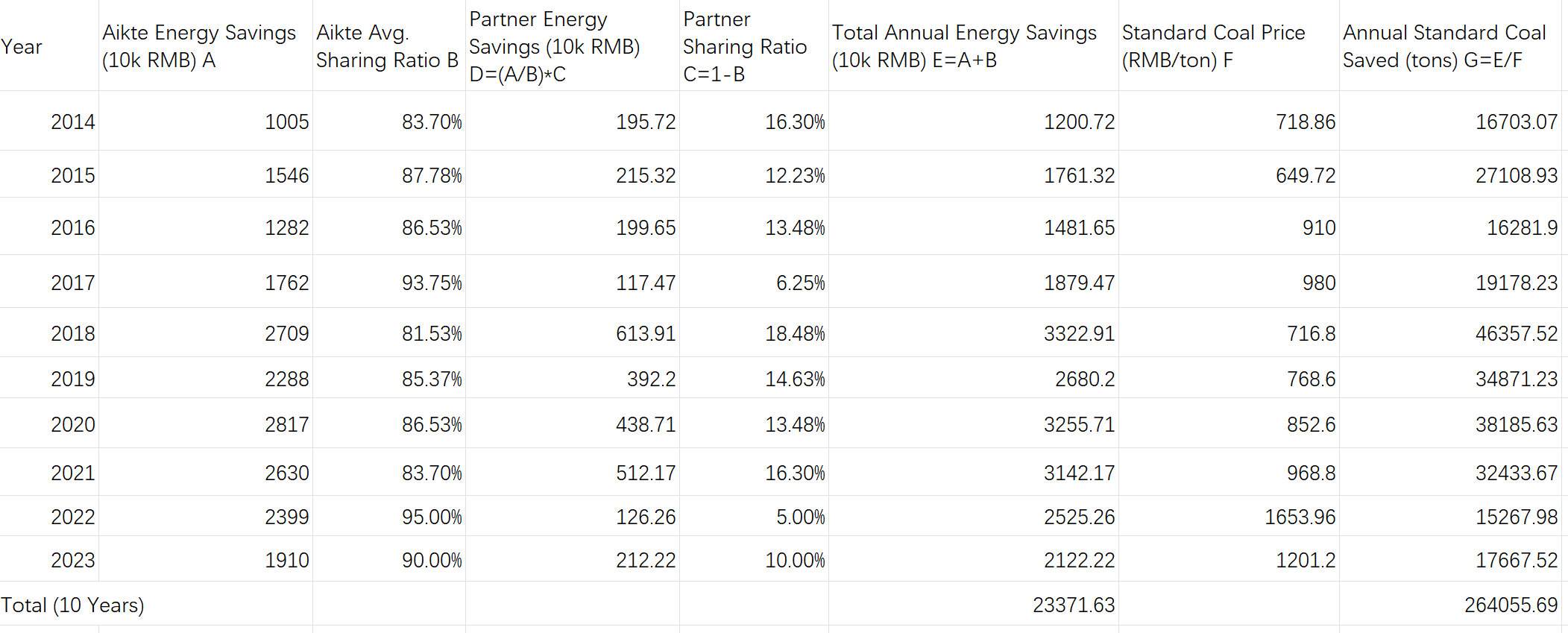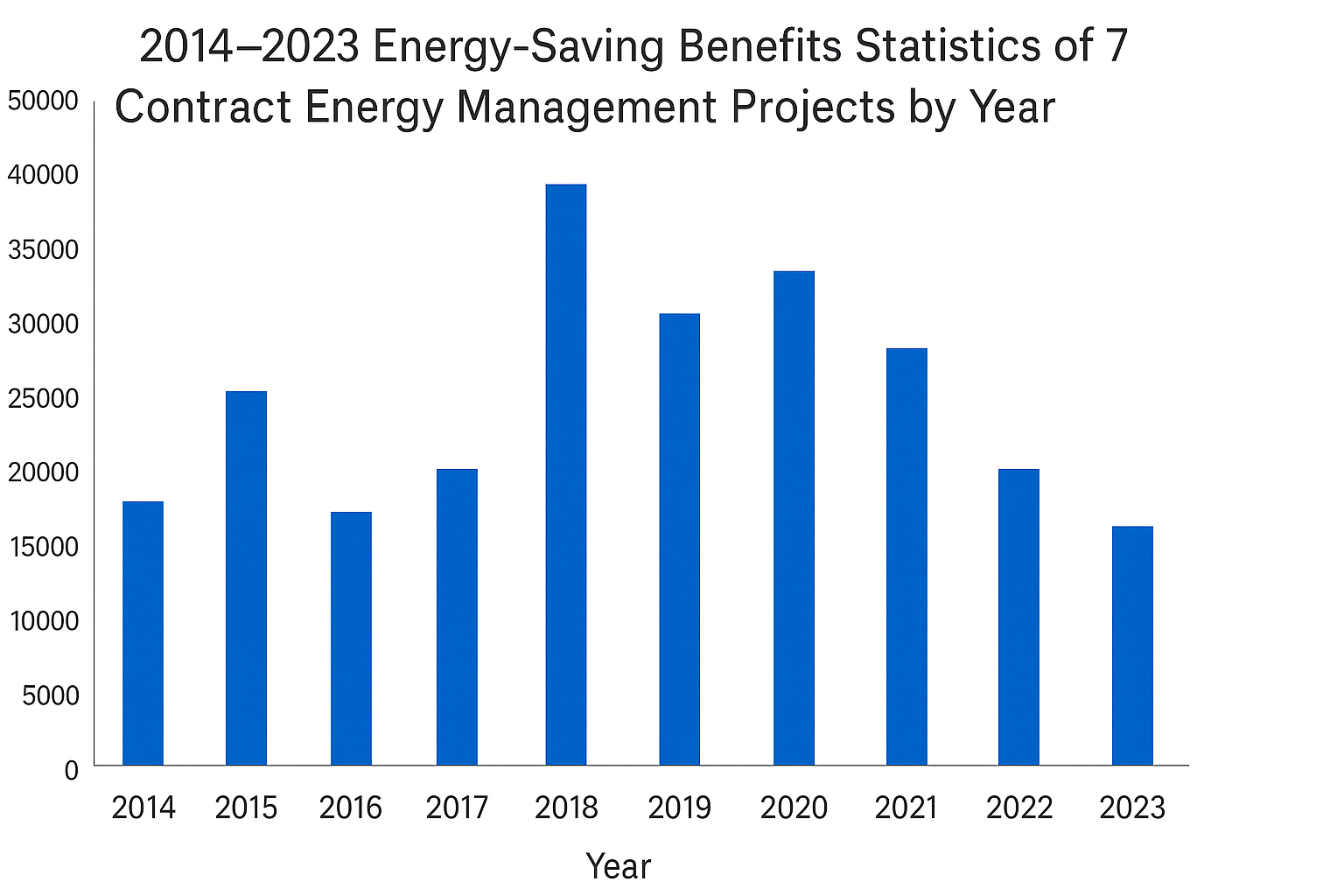Location>Home> >>Project Achievements
2014–2023 Energy Savings Table


Notes:
1. List of Projects:
(1) Beisu Coal Mine Water Heating EPC Project
(2) Juncheng Mine Comprehensive Energy Retrofit and New Energy Utilization Project
(3) Gaojiapu Mine Integrated Energy Utilization Phase II BOT Project
(4) Yangcun Coal Mine “Clean Energy Utilization” EPC Project
(5) Zhaolou Coal Mine Centrifugal Air Compressor Energy Efficiency Upgrade Project
(6) Jining No.3 Coal Mine Centrifugal Air Compressor Waste Heat Recovery Project
(7) Yangcun Coal Mine “Clean Energy Utilization Phase II Project”
2. Aikte’s "Average Energy Sharing Ratio": This reflects the average annual share ratio based on contractual agreements for profit sharing, actual operational durations, and any delayed benefit collections. Since the share ratios vary by project and may overlap in collection periods, an annual average of shared energy savings across all active projects is used for estimation.
3. Remaining 198 Projects: These are engineering construction projects solely implemented by Aikte, where the client purchases the system outright and independently benefits from the energy savings. These projects have not been submitted for third-party certification or formal project confirmation filings, but engineering documentation is available upon request.
4. Cumulative Energy Savings Estimate: The 7 CEM projects have collectively saved 264,055.69 tons of standard coal over 10 years, averaging 3,772 tons per project per year. Assuming a 20-year operational lifespan across all 205 projects, the estimated total energy savings could reach approximately 15.46 million tons of standard coal. (This is an estimated figure for reference only and not legally binding.)
5. Coal Transport Equivalent (for visualization purposes): Based on the standard Chinese railcar load of 60 tons per carriage and converting 1 ton of raw coal into 4400 kcal/kg standard coal for thermal power plants (assuming 100% efficiency), the equivalent of 24.6 million tons of coal saved would require approximately 410,000 train carriages to transport. (This is also an estimate for reference only and not legally binding.)